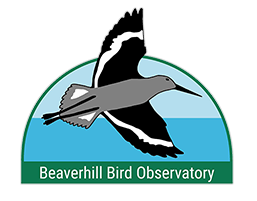History
Beaverhill Lake has long been a subject of interest for bird watchers and biologists. Its large size and shallow depth makes it an enormously productive stopover site for migratory and breeding waterfowl and shorebirds, and all manner of songbirds are attracted to the nearby prairies and forests. In the early 1980s it became a favourite place for local banders to trap and band birds, although this was performed on weekends with little consistency. Nonetheless, these early efforts indicated where banding was most productive.
In 1984, our chair, Geoff Holroyd, was invited to join the banders and suggested that they work together and formally founded the Beaverhill Bird Observatory (BBO) on the south shore of the lake. At the time, this was the second formal bird observatory in Canada, pre-dated only by Long Point Bird Observatory on Lake Erie in Ontario, where Geoff spent his early years. Over the decades, BBO has performed annual monitoring of bird migration and of local breeding birds, based out of a small lab and two bunkhouses that eventually became a permanent staging area for staff and volunteers. Bird sightings were initially crowdsourced from visitors and local birders, but BBO soon began to regularly employ field assistants to collect data with greater consistency. Volunteers and staff maintained trails and took part in habitat enhancement projects, and BBO were officially dubbed the stewards of the Beaverhill Natural Area in 1987. In 1992, BBO developed a formalized protocol inspired by Long Point Bird Observatory, which, with some modification, continues to be in use to this day, and in 1994, BBO helped to train banders who founded another bird observatory on the shore of Lesser Slave Lake, which continues operating to this day.
BBO has continued to expand its operations over the course of its history. While the core of our objective is still migratory bird monitoring, we now maintain and monitor three grids of nest box for Tree Swallows, which boast some of the highest nesting productivity in the continent. We incorporated a formalized MAPS (Monitoring of Avian Productivity and Survivorship) protocol into our field season when that program started in 1989, and in 2002 began yearly fall monitoring of Northern Saw-Whet Owl migration. In 2016, we began monitoring for bat movements through the Natural Area: we now maintain 23 bat boxes and monitor data from an ARU (Acoustic Recording Device) designed to pick up ultrasonic frequencies from bat echolocations. We also maintain and monitor 20 owl nest boxes in the natural area.
As time has gone on, we have expanded our focus to education and outreach. The Natural Area, and BBO by extension, is open to the public, and over the years we have hosted thousands of visitors, who learned about banding, migration and bird conservation. In 2012, we began offering educational programming to schools in what has now evolved into our winter BirdSmart© program, which reaches over ten thousand students throughout the province every year. In 2013, we began hosting a number of interns who cooperated with BBO staff in a variety of research projects. In 2016, we started our Young Ornithologist Workshops, which allows secondary school students to earn credits by taking part in a one-week crash course in scientific methods, ecological monitoring and life style choices.
In 2020 we entered an exciting new chapter in our history: while our venerable lab building had served us well since its construction in 1984, it was past due for an upgrade. Finally, after several grants and generous donations, we were able to begin construction on our new lab and educational centre in the fall of 2020, and our board and staff are abuzz with speculation about the possibilities it represents.

